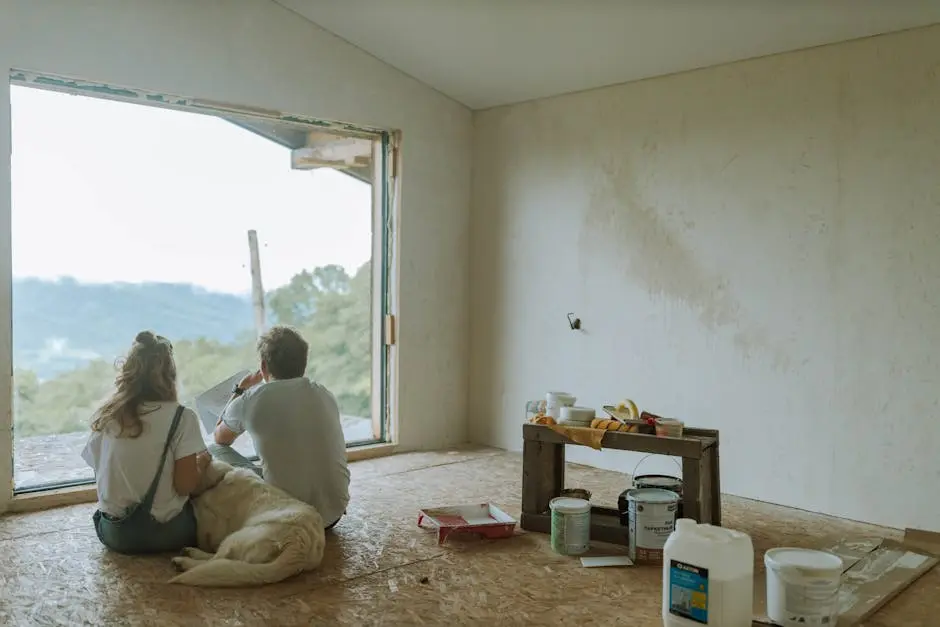Embarking on a home remodeling project can be an exciting yet daunting task, especially when trying to stay on budget. Thankfully, seasoned remodeling experts have a wealth of knowledge to share for achieving stunning results without breaking the bank. In this blog, we’ll explore practical tips to guide you in transforming your living space efficiently and economically.
Understanding Your Home’s Potential
Before diving into any remodeling project, it’s essential to evaluate your home’s current layout and potential. Simple changes like altering furniture placement or removing non-structural walls can dramatically change your space’s look and feel. Experts suggest starting with a clear vision and identifying the most impactful changes to enhance both function and aesthetics.
One of the critical aspects of understanding your home’s potential lies in recognizing the unique features that can be highlighted or upgraded. For instance, uncovering hardwood floors hidden beneath carpeting or revamping old fireplaces can breathe new life into a space without hefty expenses. As remodeling experts often say, sometimes the most valuable changes are right under your nose.
Moreover, taking the time to assess light fixtures and natural lighting can significantly alter your home’s ambiance. Proper lighting can make spaces appear larger and more welcoming. Consider replacing heavy drapes with lighter fabrics or incorporate mirrors to reflect light, giving your rooms a brighter and more spacious appearance.
Planning and Budgeting Wisely
Effective planning and budgeting are vital components of a cost-effective remodel. Consider setting clear priorities and determining a realistic budget. Remodeling experts recommend allocating funds for unexpected expenses and focusing spending on areas that will have the most significant impact on your home’s value and comfort.
One popular method to maintain strict control over budgeting is the ‘envelope method.’ By allocating cash for each part of your project and placing it in separate envelopes, you can more easily track spending and avoid pricey surprises. Many financial advisors suggest this as a simple yet effective budgeting tool.
Flexibility is key when planning your remodeling budget. Markets fluctuate, and so do the costs of materials and labor. It is wise to keep a buffer of around 10-20% of your total budget to accommodate any unforeseeable costs without derailing the entire project.
DIY vs. Hiring Professionals
Deciding whether to tackle projects yourself or hire professionals can significantly affect your budget. While some tasks like painting can be DIY, others may require professional expertise to avoid costly mistakes. Experts advise identifying your skill level and weighing the costs and potential savings of each option carefully.
For those who are handy and eager to learn, taking on DIY projects can be rewarding. Online resources and tutorials abound, making it easier than ever to acquire new skills. However, for complex undertakings like electrical work or structural changes, it’s advisable to consult licensed professionals to ensure safety and compliance with local codes.
Selecting Cost-Effective Materials
Choosing the right materials can save you money without compromising quality. Remodeling experts suggest exploring alternatives like recycled materials, which can offer both environmental benefits and cost savings. Additionally, consider investing in durable materials that will stand the test of time, reducing future maintenance costs.
Exploring alternative solutions, such as using reclaimed wood or repurposed stone, not only helps the environment but also adds a unique character to your home. Achieving a vintage or rustic look can be quite cost-effective when using these materials. Even small investments in sustainable options can pay off in long-term savings and environmental impact.
Consulting with vendors and doing research online can uncover budget-friendly options that do not sacrifice aesthetic. Websites dedicated to interior design often showcase innovative uses of affordable materials that could inspire your next renovation project.
Maximizing Space with Smart Design
Utilizing smart design principles can help maximize your space effectively. Experts recommend incorporating multifunctional furniture and built-ins to enhance storage and utility. Strategic use of mirrors and lighting can also create the illusion of a larger space, adding value to your home.
Consider redesigning your floor plan to optimize every square foot. Open floor plans, for example, are excellent for creating a sense of spaciousness and are often more conducive to modern living. By minimizing clutter and simplifying your space, you increase both usability and aesthetic appeal.
For those with smaller homes, maximizing vertical space can yield significant improvements. Wall-mounted shelves, hanging planters, and tall cabinetry are excellent ways to draw the eye upward, creating a perception of expanded space. Also, replacing oversized furniture with appropriately scaled pieces allows rooms to breathe, enhancing comfort and usability.
Create Your Dream Home Without Overspending
Redesigning your home doesn’t have to be an extravagant venture. With these expert tips, you can achieve a beautiful and functional space while being mindful of your budget. Remember, creativity, planning, and a strong network of professionals can turn your dream home into a reality without unnecessary expenses.




